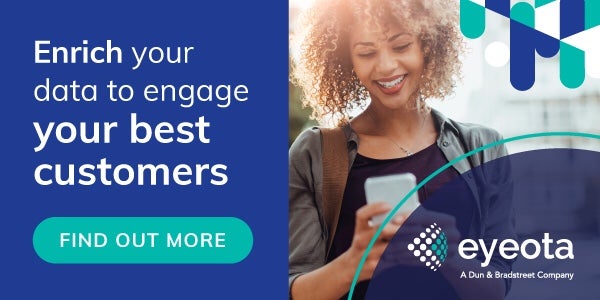By Kristina Prokop, CEO and Co-founder, Eyeota
Now that Google has scrapped its plans for Federated Learning of Cohorts (FLoC) in favor of its proposed Topics API, the buzz around “cohorts” is fading. But cohorts remain a powerful path forward for advertisers in a cookieless world. That’s because the strength of cohorts extends well beyond how most people talk about them in the marketplace today.
Cohorts aren’t a new concept. Global companies have been tapping into this marketing principle for years by clustering people who share characteristics for the purposes of privacy-compliant targeting, particularly in international markets, where deterministic data is harder to come by for marketing purposes.
As the digital marketing industry – particularly in the US – pivots toward a cookieless, privacy-first future, cohorts will become the logical go-forward acquisition approach for brands looking to stay relevant.
Let’s take a closer look at the broadening role of cohorts in the future of marketing, particularly when it comes to growing a brand’s customer base.
Cohorts and the pivot to probabilistic
As we enter the privacy-first era, voices within the data-driven marketing sphere increasingly tout the importance of robust first-party data strategies. There’s no doubt that compliant acquisition of first-party deterministic data should be a top priority for marketers.
But let’s be clear: With the exception of an elite few ubiquitous retail and platform powerhouses, first-party data will prove insufficient as a driver for go-forward marketing strategies.
Supplementing first-party data assets with additional consumer dimensions will be critical for customer personalization and retention efforts. Even more importantly, marketers must be able to extend the power of their data to enable continued prospecting and new customer acquisition.
This is where the loss of third-party cookies and identifiers like Apple’s IDFA and Google’s advertising ID will hit marketers’ efforts the hardest — and it’s where cohort onboarding provides the greatest value in future-proofing a brand’s efforts in the new marketing reality.
The benefits of cohorts as a foundational strategy
Today’s brands collect a lot of valuable first-party data about their customers, including CRM data, transactional data, survey responses, loyalty program insights and more. However, this data tends to sit in internal silos and can be subject to privacy restrictions, making it challenging for marketers to activate this information.
Cohort onboarding methodologies can help marketers consolidate and use their first-party data to power more effective upper-funnel activity, fill in customer knowledge gaps and use their data at scale. By bringing together online and offline data resources and identifying core audiences based on similar characteristics, cohort onboarding enables brands to then leverage these insights to reach new customers, enhance marketing analytics and boost omnichannel campaign performance.
Marketers can activate digital profiles generated through cohort onboarding for the following:
- Analytics and insights: Marketers can compare digital profiles to broader customer data points to gain a more holistic view of target audiences.
- Campaign outcomes: Using cohort-based digital profiles, marketers can target audiences across display, mobile and social channels.
- Omnichannel performance: Insights gleaned from offline data signals and behaviors can enhance online marketing efforts.
- Personalization and experience: Digital profiles can personalize customer experiences and content.
- Monetization: Brands can find new revenue opportunities by making their offline data available as qualified audience profiles in leading global buying platforms.
Google’s direction has a magnetic pull on the advertising world. But the shift from FLoC to Topics API shouldn’t lead advertisers to overlook the tremendous potential of cohorts. In fact, at a time when Google’s shift is pulling attention away from cohorts, marketers have an opportunity to gain a competitive edge by doubling down on cohort-driven strategies.
This starts by partnering smartly to onboard and enhance the value of a company’s data. Through cohort onboarding, marketers can tap into consumer-friendly, privacy-first, non-deterministic mechanics to associate their offline data with online profiles. This will make cohorts a major tool in shoring up brands’ data-driven marketing strategies in the coming years.















